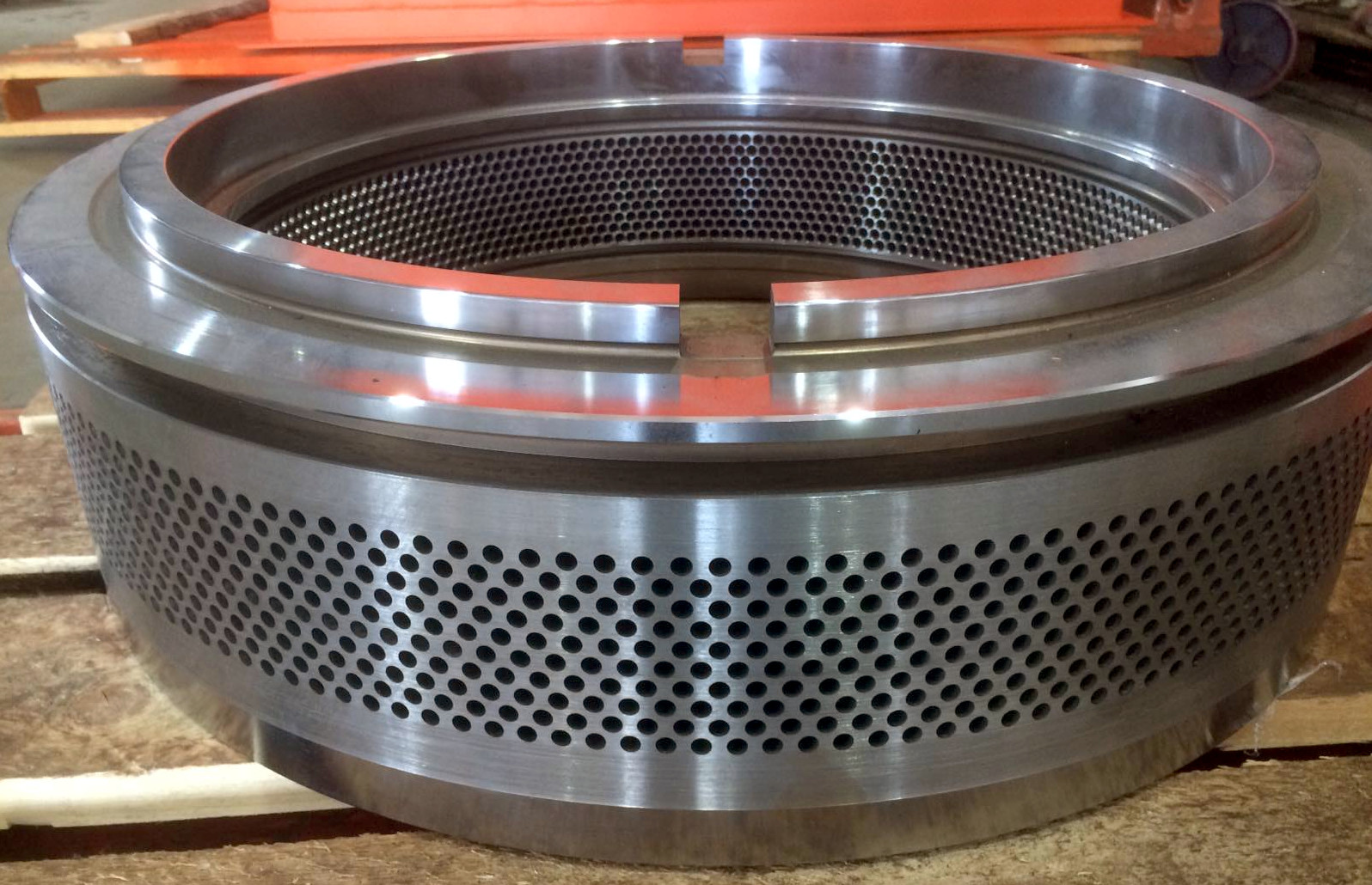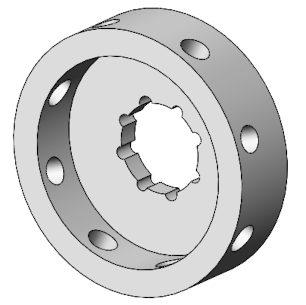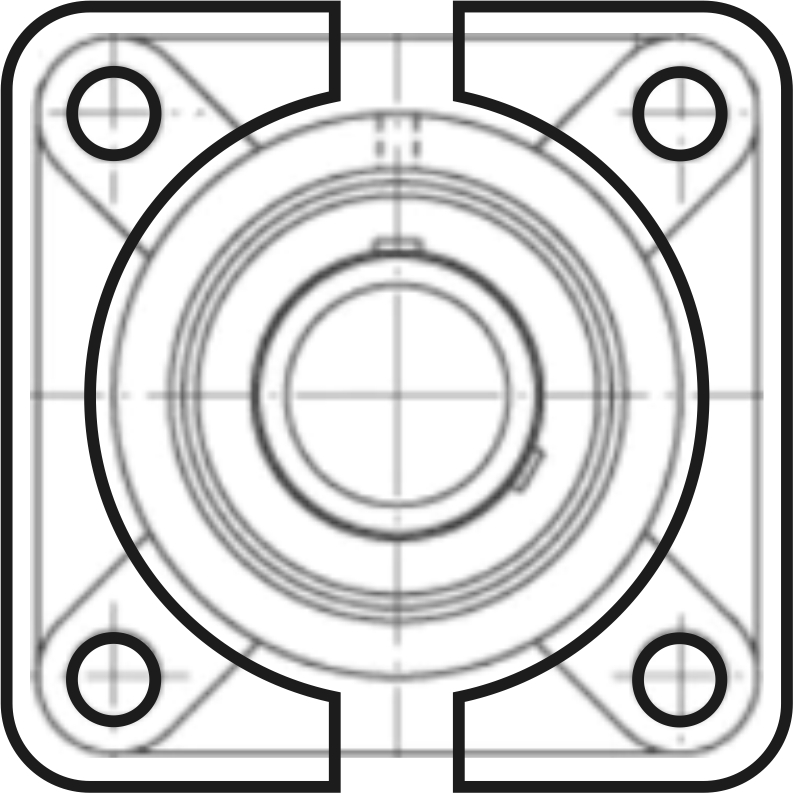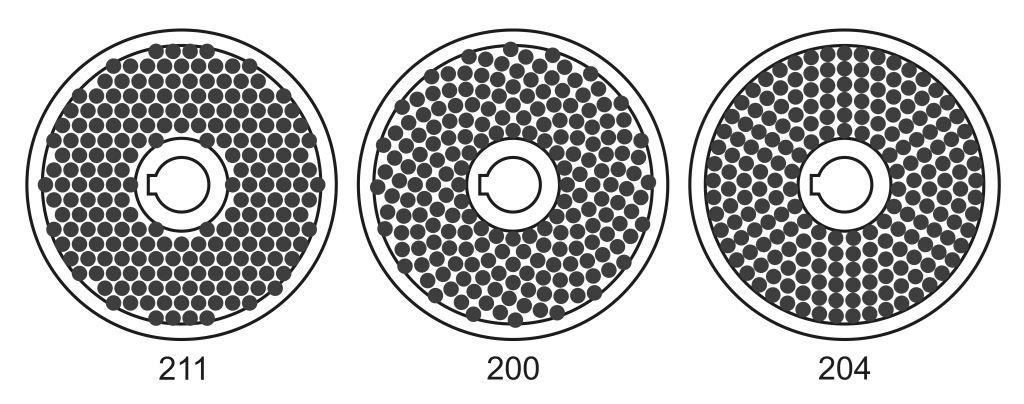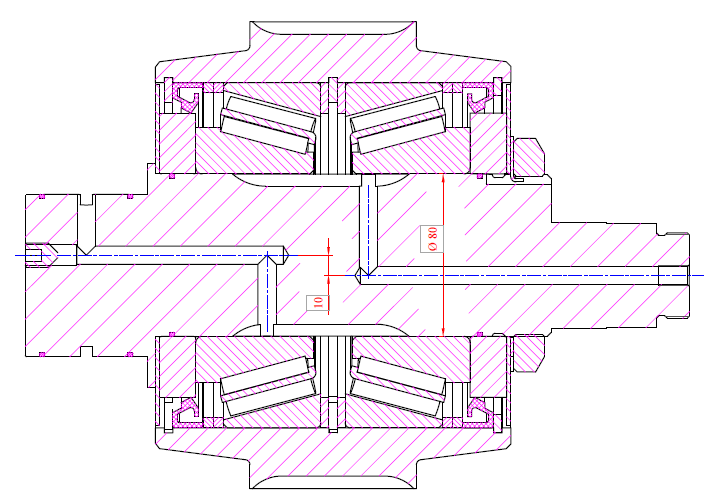The most dangerous situation is when the operator begins to feed over-dried material into a cold die with the water supply turned off. The pellet mill can usually push through the first bits due to the small amount, but extreme loads can lead to scoring on the roller bearings, significantly reducing their lifespan. Additionally, if the water is turned on too late, it generally results in an excessive load on the pellet mill and shearing of the protective device pins. Continuously feeding very small amounts of over-dried material can lead to the formation of a hard charred crust on the die's track, potentially causing its rupture. This hard layer of material does not provide sufficient resistance to the die's rotation but creates critical radial loads between the roller and the die track.
If the die becomes clogged with an emergency shutdown, it is necessary to remove the material as quickly as possible. Otherwise, when it cools down, it will harden and separating it from the track will become much more difficult. A handy tool for removing the crust under the rollers is a regular hand saw for wood. Its blade is thin enough to nearly reach the contact point with the die, and its teeth effectively remove material from the gap. Once the rollers can move onto the cleaned surface of the die, you can run the pellet mill for 5-10 seconds to allow self-cleaning. To clean the die holes, feed a mixture of sawdust and oil in a 10:1 ratio through the door hatch. Pellets soaked in oil are even more effective because they can be easily mixed in a bucket using a crowbar or steel pipe. Their hardness assists in applying distributed point pressure to push the coked material out of the die holes. One clarification: oil-soaked pellets should only be fed after the rollers start rotating and the initial oil and sawdust mixture has formed a loose layer that ensures stable contact without slipping. Feeding pellets into an empty press chamber may lead to accumulation under the rollers, followed by a sudden capture of a large lump, resulting in the shearing of the safety pins. For a die approximately 500 mm in diameter, 2-3 buckets of this mixture are usually sufficient. After cleaning, the machine is started from scratch, as usual, with a cold die.





